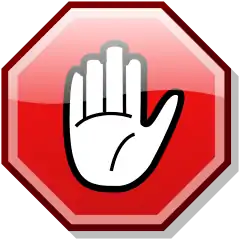SRD:Weapon Categories
Weapon Categories
Weapons are grouped into several interlocking sets of categories.
These categories pertain to what training is needed to become proficient in a weapon’s use (simple, martial, or exotic), the weapon’s usefulness either in close combat (melee) or at a distance (ranged, which includes both thrown and projectile weapons), its relative encumbrance (light, one-handed, or two-handed), and its size (Small, Medium, or Large).
Simple, Martial, and Exotic Weapons
Anybody but a druid, monk, rogue, or wizard is proficient with all simple weapons. Barbarians, fighters, paladins, and rangers are proficient with all simple and all martial weapons. Characters of other classes are proficient with an assortment of mainly simple weapons and possibly also some martial or even exotic weapons. A character who uses a weapon with which he or she is not proficient takes a –4 penalty on attack rolls.
Melee and Ranged Weapons
Melee weapons are used for making melee attacks, though some of them can be thrown as well. Ranged weapons are thrown weapons or projectile weapons that are not effective in melee.
Reach Weapons
Glaives, guisarmes, lances, longspears, ranseurs, spiked chains, and whips are reach weapons. A reach weapon is a melee weapon that allows its wielder to strike at targets that aren’t adjacent to him or her. Most reach double the wielder’s natural reach, meaning that a typical Small or Medium wielder of such a weapon can attack a creature 10 feet away, but not a creature in an adjacent square. A typical Large character wielding a reach weapon of the appropriate size can attack a creature 15 or 20 feet away, but not adjacent creatures or creatures up to 10 feet away.
Double Weapons
Dire flails, dwarven urgroshes, gnome hooked hammers, orc double axes, quarterstaffs, and two-bladed swords are double weapons. A character can fight with both ends of a double weapon as if fighting with two weapons, but he or she incurs all the normal attack penalties associated with two-weapon combat, just as though the character were wielding a one-handed weapon and a light weapon.
The character can also choose to use a double weapon two handed, attacking with only one end of it. A creature wielding a double weapon in one hand can’t use it as a double weapon—only one end of the weapon can be used in any given round.
Thrown Weapons
Daggers, clubs, shortspears, spears, darts, javelins, throwing axes, light hammers, tridents, shuriken, and nets are thrown weapons. The wielder applies his or her Strength modifier to damage dealt by thrown weapons (except for splash weapons). It is possible to throw a weapon that isn’t designed to be thrown (that is, a melee weapon that doesn’t have a numeric entry in the Range Increment column on Table: Weapons), but a character who does so takes a –4 penalty on the attack roll. Throwing a light or one-handed weapon is a standard action, while throwing a two-handed weapon is a full-round action. Regardless of the type of weapon, such an attack scores a threat only on a natural roll of 20 and deals double damage on a critical hit. Such a weapon has a range increment of 10 feet.
Projectile Weapons
Light crossbows, slings, heavy crossbows, shortbows, composite shortbows, longbows, composite longbows, hand crossbows, and repeating crossbows are projectile weapons. Most projectile weapons require two hands to use (see specific weapon descriptions). A character gets no Strength bonus on damage rolls with a projectile weapon unless it’s a specially built composite shortbow, specially built composite longbow, or sling. If the character has a penalty for low Strength, apply it to damage rolls when he or she uses a bow or a sling.
Ammunition
Projectile weapons use ammunition: arrows (for bows), bolts (for crossbows), or sling bullets (for slings). When using a bow, a character can draw ammunition as a free action; crossbows and slings require an action for reloading. Generally speaking, ammunition that hits its target is destroyed or rendered useless, while normal ammunition that misses has a 50% chance of being destroyed or lost.
Although they are thrown weapons, shuriken are treated as ammunition for the purposes of drawing them, crafting masterwork or otherwise special versions of them (see Masterwork Weapons), and what happens to them after they are thrown.
Light, One-Handed, and Two-Handed Melee Weapons
This designation is a measure of how much effort it takes to wield a weapon in combat. It indicates whether a melee weapon, when wielded by a character of the weapon’s size category, is considered a light weapon, a one-handed weapon, or a two-handed weapon.
Light
A light weapon is easier to use in one’s off hand than a one-handed weapon is, and it can be used while grappling. A light weapon is used in one hand. Add the wielder’s Strength bonus (if any) to damage rolls for melee attacks with a light weapon if it’s used in the primary hand, or one-half the wielder’s Strength bonus if it’s used in the off hand. Using two hands to wield a light weapon gives no advantage on damage; the Strength bonus applies as though the weapon were held in the wielder’s primary hand only.
An unarmed strike is always considered a light weapon.
One-Handed
A one-handed weapon can be used in either the primary hand or the off hand. Add the wielder’s Strength bonus to damage rolls for melee attacks with a one-handed weapon if it’s used in the primary hand, or 1/2 his or her Strength bonus if it’s used in the off hand. If a one-handed weapon is wielded with two hands during melee combat, add 1-1/2 times the character’s Strength bonus to damage rolls.
Two-Handed
Two hands are required to use a two-handed melee weapon effectively. Apply 1-1/2 times the character’s Strength bonus to damage rolls for melee attacks with such a weapon.
Weapon Size
Every weapon has a size category. This designation indicates the size of the creature for which the weapon was designed.
A weapon’s size category isn’t the same as its size as an object. Instead, a weapon’s size category is keyed to the size of the intended wielder. In general, a light weapon is an object two size categories smaller than the wielder, a one-handed weapon is an object one size category smaller than the wielder, and a two-handed weapon is an object of the same size category as the wielder.
Inappropriately Sized Weapons
A creature can’t make optimum use of a weapon that isn’t properly sized for it. A cumulative –2 penalty applies on attack rolls for each size category of difference between the size of its intended wielder and the size of its actual wielder. If the creature isn’t proficient with the weapon a –4 nonproficiency penalty also applies.
The measure of how much effort it takes to use a weapon (whether the weapon is designated as a light, one-handed, or two-handed weapon for a particular wielder) is altered by one step for each size category of difference between the wielder’s size and the size of the creature for which the weapon was designed. If a weapon’s designation would be changed to something other than light, one-handed, or two-handed by this alteration, the creature can’t wield the weapon at all.
Improvised Weapons
Sometimes objects not crafted to be weapons nonetheless see use in combat. Because such objects are not designed for this use, any creature that uses one in combat is considered to be nonproficient with it and takes a –4 penalty on attack rolls made with that object. To determine the size category and appropriate damage for an improvised weapon, compare its relative size and damage potential to the weapon list to find a reasonable match. An improvised weapon scores a threat on a natural roll of 20 and deals double damage on a critical hit. An improvised thrown weapon has a range increment of 10 feet.
Back to Main Page → 3.5e Open Game Content → System Reference Document→ Weapons

